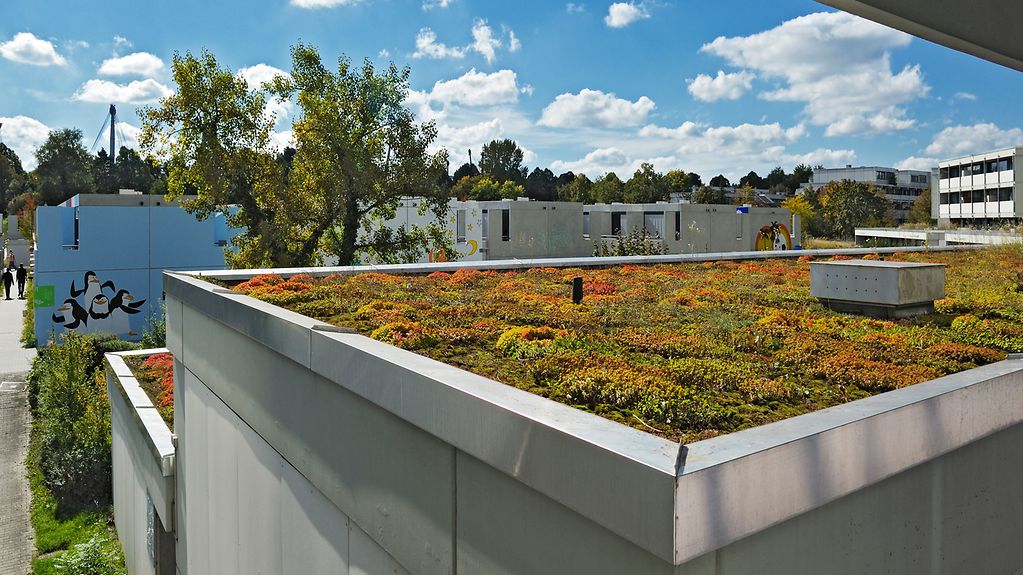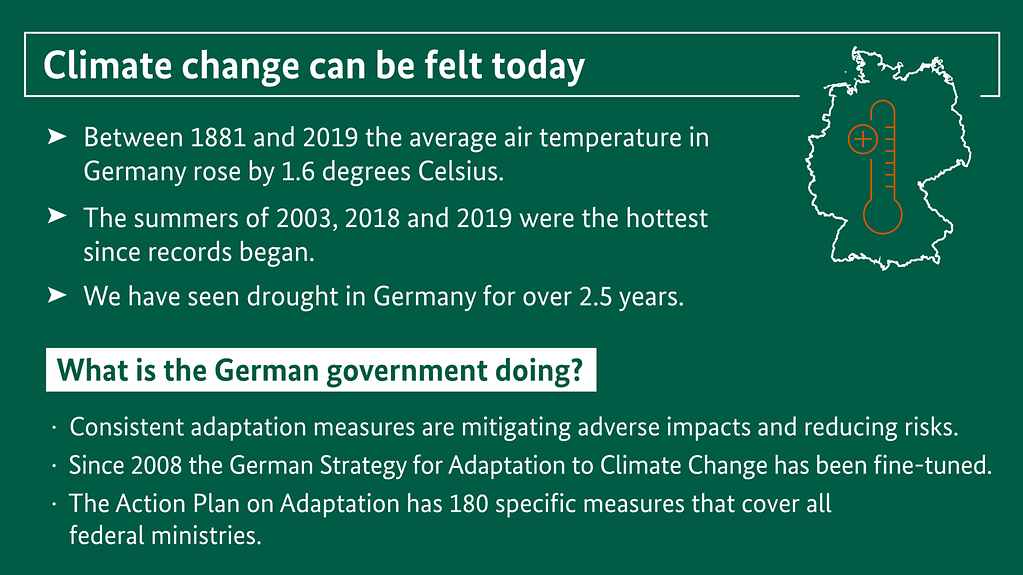Second progress report adopted
The consequences of climate change can be felt in Germany. In its second progress report, the German government takes stock of the measures taken to date under the Adaptation Strategy. This year 790 million euros are available for urban development.
2 min reading time

The assistance programme "Adaptation to climate change in social facilities" is to make possible measures like green roofs and facades.
Photo: mauritius images / imageBROKER / Manfred Bail
"Climate change has arrived in Germany. The municipalities that are struggling with heat and water scarcity in summer are feeling it most keenly. So that we can deal better in future with the consequences of climate change, we need good planning and preparedness measures with vision," said Federal Minister for the Environment, Svenja Schulze. She was presenting the second progress report on the German Strategy for Adaptation to Climate Change.
In the report, the German government takes stock of the last five years. The key part of the Adaptation Strategy is the third "Action Plan on Adaptation" with 180 concrete measures that cover all federal ministries. Three quarters of the measures laid out in the previous action plan have already been or are being implemented.

Climate change is one of the greatest challenges of the 21st century.
The diagram reads:
- Between 1881 and 2019 the average air temperature in Germany rose by 1.6 degrees Celsius.
- The summers of 2003, 2018 and 2019 were the hottest since records began.
- We have seen drought in Germany for over 2.5 years.
- Months with below-average groundwater levels are becoming more frequent.
- Extreme weather events like heatwaves and flooding are also occurring more frequently.
- The sea levels in the North Sea and the Baltic Sea indicate a significant rise.
- The flood of the century in 2002 along the River Elbe caused some 11 billion euros of damage in total.
Under the heading "What is the German government doing?" stands:
- Consistent adaptation measures are mitigating adverse impacts and reducing risks.
- Since 2008 the German Strategy for Adaptation to Climate Change has been fine-tuned.
- The Action Plan on Adaptation has 180 specific measures that cover all federal ministries.
Photo: Bundesregierung
Protecting social facilities from heat
Before the end of October 2020, the Federal Minister for the Environment will launch a new assistance programme entitled "Adaptation to climate change in social facilities". A total of 150 million euros are available for the programme from the German government’s economic stimulus package.
Often homes for the elderly, care homes, nurseries and hospitals lack the funds to take appropriate preventive action, explained the minister. Municipalities, non-profit organisations and companies working in the health and social sector are eligible for assistance.
They can, for instance make green roofs or facades, erect pavilions that provide shade and install drinking water dispensers. Social facilities can also develop their own specially tailored adaptation to climate change concepts, and receive advice on this.
Climate measures precondition for urban development assistance
Climate change mitigation and adaptation to climate change measures such as energy efficient buildings or more green spaces in urban areas are now a precondition for urban development assistance. This year alone, the German government will provide 790 million euros for urban development.
Mixed forests and natural floodplains for a healthy climate
Since 2011, the Institute for Federal Real Estate has aimed to make federally-owned forests climate-proof, structurally diverse, site-appropriate mixed woodlands.
Since the second action plan, the German government has provided ongoing assistance for climate adaptation measures. The creation of natural floodplains accounts for one quarter of all measures, with the renaturalisation of floodplains and natural watercourses.
In 2008, the German government presented its Strategy for Adaptation to Climate Change. Coordinated action at all levels of government is to mitigate the adverse impacts of climate change, reduce risks and damage caused by global warming, and prevent costs rising further.